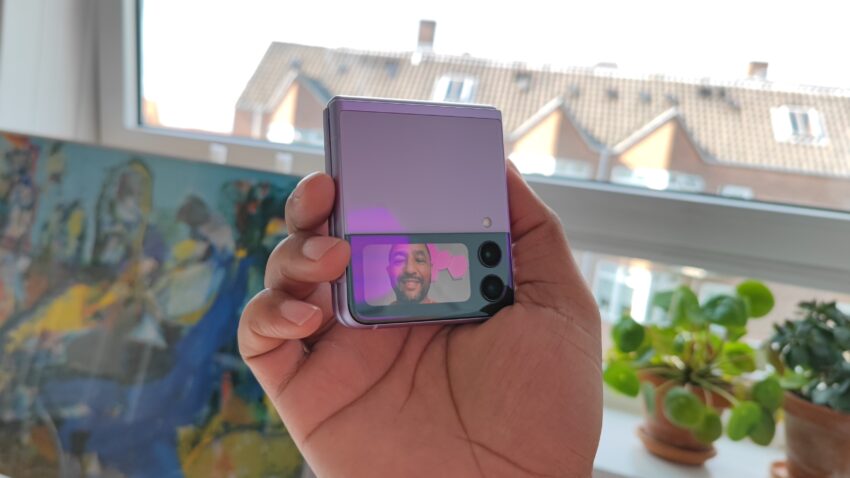Things we want to see from the Samsung Galaxy Z Flip 4

Samsung is really intent on making foldables mainstream, and rumor has it that it is allocating quite a big portion of its 2022 production to these devices. While it probably really wants the Galaxy Z Fold line to be the leader in that niche market, it is the clamshell Galaxy Z Flip that’s getting the lion’s share. That’s partly because of the price and partly because of a more familiar design. While the Galaxy Z Flip 3 sold quite well, there is definitely still a lot of improvement. Here’s a laundry list of the things we hope Samsung would put inside the Galaxy Z Flip 4 next year, even if some might sound a bit too good to be true.
There will always be some hardware upgrade every generation, so this is pretty much a given. Then again, the Galaxy Z Fold 3 did prove that Samsung could sometimes take a step back, depending on how the market winds blow. So while we’re expecting a Snapdragon 8 Gen1 and maybe even 12GB of RAM for the Galaxy Z Flip 4, there is one particular hardware upgrade we’re definitely dying for.
We’re hoping that the Galaxy Z Flip 4 will finally have better cameras next year. Samsung had been using the same pair of 12MP sensors since the first Galaxy Z Flip early last year, and it’s getting pretty dated in its capabilities. Granted, That will require carving out more space for the sensors, but sensors have also shrunk in size over the past years.
Samsung is definitely one of the leading manufacturers of such camera sensors, so it’s rather disappointing that it couldn’t do better for its foldables. Taking pictures has become a major use case for smartphones, and the Galaxy Z Flip design makes it almost fun to use the main cameras for selfies. Hopefully, we’ll be seeing at least a 50MP main camera next year without taking too much away from the small foldable.
One “upgrade” we would be fine without is Samsung’s under-panel sensor (UPS), what it calls its implementation of the Under-Display Camera. Although it has been rumored to have been working on the technology for years, this UPS first debuted on the Galaxy Z Fold 3. Suffice it to say, most were unhappy with it.
It’s not that the camera was terrible, just that it was definitely not the best in class. The images and videos it produced were usable enough if a bit creamy thanks to post-processing, but they are definitely outclassed by regular front-facing cameras underneath punch-holes. It wasn’t exactly invisible either, especially when compared to ZTE’s second-gen implementation.
Samsung could improve its UDC next year, but it might be too early in the iteration to actually put that in the Galaxy Z Flip 4. It could be forced to use this year’s hardware if it pushes through with that design, which is definitely going to be a wart on the foldable’s face, even if it’s invisible. Some might argue that the Galaxy Z Flip’s main cameras take better selfies, but, unlike the Galaxy Z Fold 3, you can’t do video calls on the Cover Screen.
The Galaxy Z Flip series is being marketed as the more approachable foldable phone with a familiar design and a screen that, in theory, should have fewer opportunities for damage because of its smaller size. The Galaxy Z Flip 3 also introduced a stronger UTG material and better hinge system to ensure the foldable screen’s improved durability over the previous generation.
In practice, however, the Galaxy Z Flip 3 turned out to be more problematic than its larger sibling. Reports of surprising cracks in the middle of the screen, right at the crease, are popping up on the Internet. There doesn’t seem to be a known reason for this behavior, giving some would-be buyers reason to hold off.
The Galaxy Z Flip 4 will hopefully fare better, and there are already industry reports on how Samsung Display is working to improve its flexible OLED panels. We’re still not at the point where these deforming screens can be as reliable as rigid ones, but every generation should improve on the previous one, not take a step back.
Just like with its cameras, the Galaxy Z Flip has been using the same 3,300 mAh pack inside. On the one hand, that’s not surprising when you consider that the phone needs to have two smaller batteries rather than a single large one. On the other hand, that capacity just isn’t cutting it in today’s day and age, even for average smartphone use.
A bigger battery would naturally require more space and perhaps a bigger phone, but some users might be OK with a slightly larger Galaxy Z Flip 4. If that increase in size also means better cameras and a better cover display, then the sacrifice will be even more worth it.
In reality, we might see only a tiny increase, probably to 3,500 mAh or 3,700 mAh. Samsung needs to at least compensate by using faster charging speeds; anything above 15W would be good. Understandably, the company is being cautious about batteries and charging after the ill-fated Galaxy Note 7, but there is such a thing as being too careful.
As magical or insane as foldables might seem, the mechanism that enables this kind of device incurs some rather high costs beyond the more fragile foldable screen. The hinge, for example, introduces more moving parts that could break, as well as an entry point for dust and water to damage the phone inside. That’s why it’s not surprising that the first generation of foldable devices wasn’t rated for such environments, though the first Galaxy Fold did fail more spectacularly than its contemporaries.
This year’s generation improved that in one significant factor by adding an IPX8 rating. This meant that the Galaxy Z Flip 3 could withstand a long dip in deep freshwater. Unfortunately, that “X” also means that it isn’t resistant to dust at all and can still be easily foiled by these small particles.
Hopefully, Samsung will surprise us with an IP68 Galaxy Z Flip 4 next year, and that would speak volumes to increase confidence in foldable phones. There is no shortage of worries from consumers about protecting these devices from dust, and some even go to lengths to cover their otherwise luxurious looking-foldables in armor for that very purpose.




Leave a Reply